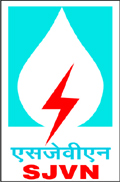Glimpses of the 20th India Power Forum |

|
Backdrop
In past few years, India has achieved an impressive growth in adding power generation capacity.
Efforts have been made to alleviate the long standing problems like power shortages, rural
electrifications, poor distribution companies (Discom) financial health and non performing energy
assets through various policy interventions. The energy supply spectrum largely entails coal (about
50%) followed by oil and gas. It is envisaged that in 2050, India will have an annual energy demand of
about 14,500 TWh per year (with a moderate CAGR of 6.7% till 2050). Largely the demand will be from
industry sector followed by transportation and buildings. In the absence of paradigm shift towards
the low carbon alternatives, the dependence on fossil fuel will increase, causing a serious threat to
nation's energy security and GHG emissions in future.
With determined efforts by the policy makers, India can overcome barriers to enable investment in
clean and sustainable energy supply options. In 2050, India will achieve reliable, economically
competitive and environmentally sustainable electricity system, addressing the energy security and
environmental strains. A couple of trends under current energy sector reforms are converging to
create game-changing disruptions like electrification of large energy intensive sectors coupled with
accelerated renewable energy capacity addition, parallel efforts to strengthen electricity supply to
underserved and un-served through integration of grid and distributed renewable energy, adoption
of emerging storage technologies to increase the grid appetite to accommodate intermittent
sources and enabling cost optimization through the best use of automation and communication
analytics.
All India installed capacity in MW of power station as on 30.4.2017 (utilities) is 329204.53. This includes
Thermal (220569.88 - Coal, Gas, Diesel), Nuclear (6780), Hydro (44594.42) and Renewables (57260.23).
The Plant Load Factor (PLF) of Thermal power stations is an index of utilization of the installed capacity.
The average PLF of TPSs of power utilities is declining and is cause of worry for the sector.
Today everyone in this country realizes that without Power no development could take place in any
country of the world. With the help of per capital power consumption the standard of living of all the
human being in a country is measured. But the Power Sector is not getting the priority which is
actually required. Every Government has been talking for providing 24 hours power to all the villages
of our country and this talk is going on since last 30 years (approx.). Government should try to
understand the real problem of power sector and could take remedial rmeasues in positive direction
to solve the problem of power sector.
In this backdrop, this Conference will debate on “Sustainability of Power Business - Paradigm Shift for
24x7 Power for All”









